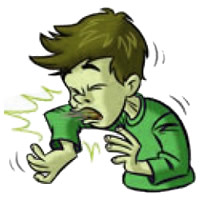

- Is it true that influenza viruses are constantly changing and therefore it is impossible to create a permanent immune defense?
- Yes, Even the flu vaccine is changed frequently, taking into account these new mutant viruses.
- Can I get influenza from the vaccination?
- No, the viruses used are dead and unable to cause disease.
- Some people say they never had the flu and after vaccination began to have it, is that possible?
- No. This makes no sense. What happens is that 10% of Influenza subtypes are not covered, and therefore some vaccinated patients may get flu. Many people get confused with colds and flu.
- Does the flu vaccine cover the cold virus?
- No.
- Can getting a cold or flu being exposed to cold weather?
- In general, colder months are those where there is more virus circulation, and people spend more time in contact with each other indoors. There is no direct relationship between catching a cold or the flu. Nobody gets the flu because of rain or opening the refrigerator with wet body. To get the disease it is necessary to contact with the virus.
- Does Vitamin C prevent viruses?
- There is no evidence.
- Chicken soup is good for curing the flu, isn't it?
- Not good, not bad. As one of the treatments is to increase fluid intake, the chicken soup serves this purpose. Hot foods relieve symptoms of a sore throat. But the chicken itself has nothing in it.
- Swine flu is more severe than seasonal flu, isn't it?
- No. The rates of mortality and complications are similar.
